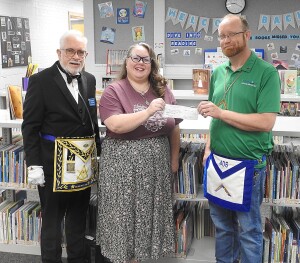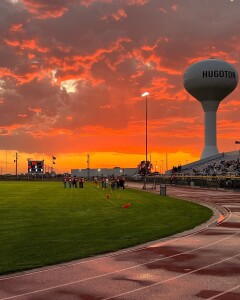The Miniature Napoleonic Coach
Researcher – Sue Weissinger Reporter – J. L. Wells
The delightful, beautiful coach is in a display case in the No Man’s Land Museum in Goodwell. At first glance, it appears to be a toy. Any little girl in the 1930s might have looked at it and imagined a Christmas gift. The twenty-first Century girl would envision it with her Barbie dolls. The coach, however, is not a toy.
The “F” on the door of the coach stands for the Fisher Body logo. The Napoleonic Coach has been a logo for the Fisher Company since 1922.
The Fisher Body Craftsman’s Guild served from 1930 to 1968. As a philanthropic project during the Great Depression, boys 11 to 20 were challenged to build a miniature model Napoleonic Coach in 1/18 scale from plans provided by the Guild. Thousands of boys all over America completed miniature model coaches. The Fisher Body Corporation believed it would encourage creative talent leading to high ideals of fine craftsmanship.
One boy who entered the contest was Ralph Stephen Abel. He was born in 1915 in St. John, Kansas but moved to Liberal in 1920 where he graduated from high school.
When Ralph was 15 years old, he entered the first contest of the Fisher Body Craftsman’s Guild building the Napoleonic Coach. He entered the Kansas Junior Division ages 12 through 15. Ralph’s Napoleonic Coach won First Place Ribbons in Woodcraft, Metalcraft and Paintcraft, a Second Place Ribbon in Trimcraft, and an Honorary Ribbon in the Nationals. He was awarded $30 in gold certificates and a Federal Reserve Bank Note for $5. (His $35.00 winnings were equivalent to a weekly wage in 1931 – as noted by the Museum.)
Looking at Ralph’s delicately carved wheels banded with metal and the metal trim on the coach, it is easy to see why he won ribbons. The red and gold painted accents are beautiful on top of the coach, the seat, and wheels. He used gold, black and blue paint for the coach. His trim work is outstanding. Besides all the carved pieces and metal pieces, he appeared to have also included blue velvet fabric.
Following high school, Ralph took a three year trade course in Aeronautical Engineering. He enlisted in the Navy in 1945 during World War II and served in Guam.
After his discharge from the Navy, Ralph began farming south of Baker. (Baker is a community east of Hooker in northeastern Texas County about ¼ mile north of US Route 64.) Shirk’s book, Oklahoma Place Names, reports that Baker was named in honor of Reuben F. Baker of Hooker and was originally called Bakersburg. The name of the post office was changed to Baker August 15, 1953.
Stephen married Ethel Scott, and they lived south of Baker. He built a home in Baker in the 1950s where he and Ethel raised five children. Ralph was a farmer who purchased farm land and also rented farm land around Baker. Ralph died in 1980 at age 64.
The Museum display sign states “There Were Bright Spots During the Great Depression and Dust Bowl”. Ralph Abel’s exquisite Miniature Napoleonic Coach was a “bright spot” and continues to amaze visitors.
There isn’t a team of snow white horses pulling the coach, but it is easy to imagine them ahead of the coach.
All visitors are invited to view the Coach and the wide variety of other exhibits from Prehistoric to Native American to Statehood to the Dust Bowl and beyond. The Museum at Goodwell is open Tuesday through Saturday, 10:00 a.m. to noon and 1:00 to 4:00 p.m. Follow NoMansLandMuseum on Facebook and watch the No Man’s Land Museum You Tube page.




